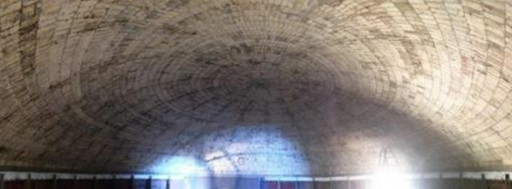
Client’s Challenge
In 2018, Veolia was approached by Nyrstar Hobart for the urgent repair of Roaster 5. Nyrstar Hobart is located on the western bank of the River Derwent in Hobart, Tasmania. They are a large-scale zinc smelter with a capacity of 285,000 tonnes. The Hobart smelter is one of the world’s largest zinc smelters in terms of production volume.
Approximately 9 metres of the centre of the 13.4 meter dome of Roaster 5 collapsed on Friday the 1st of June 2018. The Roaster Refractories dome was approximately 50 years old; a report made in 2014 indicated that the dome was due for replacement by 2022.
The condition and integrity of the dome’s supporting steelwork, such as bricking shelves, was unknown with the last refractory repair of Roaster 5 occurring in 1989 on the upper vertical walls using gunning grade material. Given the unknown condition of the incumbent refractory lining, safety was critical.
Veolia’s Solution
Due to the unknown integrity of Roaster 5, the safety of the teams involved was paramount. Upon assessing the scope of work, Veolia mobilised a planner to develop a methodology, repair timeline and target based estimate to complete the re-bricking of the dome and upper vertical walls.
Veolia’s solution for the re-bricking process was to work with a mechanical contractor to manufacture a supporting steel dome-shaped former.
The steel dome-shaped former served 2 functions:
- To support the brickwork installation; and
- Provide overhead protection for those working below the dome.
Process Description
The repair methodology consisted of manufacturing a segmented 13.4 meter steel dome-shaped former to support the dome brickwork as the bricks were progressively laid.
The design and placement of the dome-shaped former were crucial for the successful brickwork installation.
To locate the dome former's support brackets, the team placed survey points around the circumference of the Roaster. Support brackets were then welded to the Roaster shells, and the centre sections of the bottom support segments were bolted together.
After the team secured the centre sections of the Roaster, arch ribs were bolted to the arch rings, and each arch rib was connected to the other using radial brackets.
Finally, the team installed radial brick supports before the brick ring commenced, while the radial brick ribs were welded as the brickwork progressed.
The Benefits To Our Client
By manufacturing a steel dome-shaped former for the brickwork removal and re-installation, Veolia brought the following benefits to the client:
- Cost savings - reduced the overall cost of the brick re-installation by 21%
- Health & Safety - Veolia recorded 0 injuries throughout the project’s timeline
- Consistent project quality - no rework was required for this project and the brick re-installation was completed within the agreed time frame
Reduced Costs by 20%
0 Injuries Recorded
Delivered on Time and Below Budget

